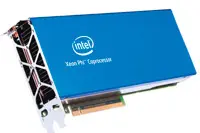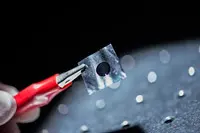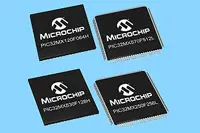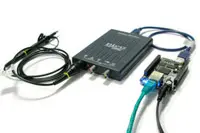Electronics News
Archive : 19 November 2014 год
 A €1billion contract signed by defence ministers from a number of countries will lead to what is being called a 'world leading' electronic radar system for the Eurofighter Typhoon. The deal will see the Captor E-Scan Active Electronically Scanned Array Radar System (AESA) integrated onto the Eurofighter Typhoon.
A €1billion contract signed by defence ministers from a number of countries will lead to what is being called a 'world leading' electronic radar system for the Eurofighter Typhoon. The deal will see the Captor E-Scan Active Electronically Scanned Array Radar System (AESA) integrated onto the Eurofighter Typhoon.
The fighter's large nose aperture, combined with the ability to move the antenna, will give the Eurofighter Typhoon greater 'vision' than its competitors, delivering better operational performance to the aircraft and to its weapon system.
The Captor E-Scan radar has a very large antenna size and repositioner, offering 200° Field of Regard. This is said to be 'significantly larger' than typical 'fixed plate' AESA radars, giving the Typhoon a tactical advantage.
The larger antenna also supports more transmitter/receiver modules, leading to higher power and reception.
Author
Graham Pitcher
Source: www.newelectronics.co.uk
 Looking to meet the challenges of future high performance computing (HPC) systems, Intel says it will build the third generation of its Xeon Phi product family on a 10nm process technology. The chips, codenamed Knights Hill, will feature the company's Omni-Path Fabric technology, rather than the Infiniband interconnect.
Looking to meet the challenges of future high performance computing (HPC) systems, Intel says it will build the third generation of its Xeon Phi product family on a 10nm process technology. The chips, codenamed Knights Hill, will feature the company's Omni-Path Fabric technology, rather than the Infiniband interconnect.
According to Intel, Omni-Path will support line speeds of up to 100Gbit/s, with up to 56% less switch fabric latency than an InfiniBand based fabric. It will also use a 48 port switch chip, rather than the 36 ports supported by InfiniBand. More nodes per switch chip means fewer switches will be needed, simplifying the creation of HPC systems.
Intel has also created an 11 company alliance, called the Fabric Builders Program. The members, from the software and hardware communities, will look to develop Omni-Path based solutions.
Xeon Phi processors are built using Intel's Many Integrated Core architecture. The first generations of the Xeon Phi offered up to 61 x86 cores per processor, with clock rates of up to 1.2GHz. Using a multithreaded approach, each processor can run at up to 1.2TFLOPS.
* Meanwhile, the Czech based IT4Innovations supercomputing centre is building the largest Xeon Phi cluster in Europe. The supercomputer, being provided by SGI, will have 52,704 cores on 864 Xeon Phi 7120 coprocessors.
Author
Graham Pitcher
Source: www.newelectronics.co.uk
 A team from Rice University, led by materials scientist Jun Lou, has created a novel cathode from nanotubes that were bonded to graphene.
A team from Rice University, led by materials scientist Jun Lou, has created a novel cathode from nanotubes that were bonded to graphene.
The method extends a stream of nanotechnology research carried out at Rice previously that began with the invention of a technique to grow very long bundles of aligned carbon nanotubes.
In this process, the nanotubes remained attached to the surface substrate but pushed the catalyst up as they grew.
The new cathode's charge transfer resistance, which determines how well electrons cross from the electrode to the electrolyte, was found to be 20 times smaller than for traditional platinum based cathodes, Lou said.
The key is in the hybrid's huge surface area, estimated at more than 2,000m2 per gram.
With no interruption in the atomic bonds between nanotubes and graphene, the material's entire area becomes one large surface. This gives the electrolyte plenty of opportunity to make contact and provides a highly conductive path for electrons.
Lou's lab built and tested solar cells with nanotube forests of varying lengths. The shortest, which measured between 20 to 25µ, were grown in just four minutes.
Other nanotube samples were grown for an hour and measured about 100 to 150µ. When combined with an iodide salt based electrolyte and an anode of flexible indium tin oxide, titanium dioxide and light capturing organic dye particles, the largest cells were only 350µ thick – the equivalent of about two sheets of paper – and could be flexed easily and repeatedly.
Tests found that solar cells made from the longest nanotubes produced the best results and topped out at nearly 18mA of current per square centimetre, compared with nearly 14mA for platinum based control cells.
In addition, the new dye sensitised solar cells were as much as 20% better at converting sunlight into power, with an efficiency of up to 8.2%, compared with 6.8% for the platinum based cells.
Author
Laura Hopperton
Source: www.newelectronics.co.uk
 Microchip has launched a new range of what it describes as low cost, high pin count 32bit PIC32 microcontrollers (MCUs). The company says that, by bringing together key features from its PICM32MX1/2 and PIC32MX5 MCU families, it has created a device suited to applications with complex code requirements.
Microchip has launched a new range of what it describes as low cost, high pin count 32bit PIC32 microcontrollers (MCUs). The company says that, by bringing together key features from its PICM32MX1/2 and PIC32MX5 MCU families, it has created a device suited to applications with complex code requirements.
The MCUs in the PIC32MX1/2/5 MCU series offer up to 83DMIPS performance and up to 512kbyte of flash and 64kbyte of RAM. Also integrated are CAN2.0B controllers with DeviceNet addressing support. Programmable bit rates of up to 1Mbit/s are available, while system RAM can store up to 1024 messages in 32 buffers.
Other features include four SPI/I2S interfaces for audio processing and playback, a Parallel Master Port and capacitive touchsensing hardware for graphics and touch sensing interfaces and a 10bit, 1Msample/s, 48channel A/D converter.
A 40MHz/66DMIPS speed option is available now in 64pin TQFP and QFN packages and 100pin TQFP packages. The 50MHz/83DMIPS speed option will be available early in 2015.
Author
Graham Pitcher
Source: www.newelectronics.co.uk
 The UK economy is facing a dire engineering skills gap and needs 87,000 new engineers a year over the next decade, a report by Unite the union has warned.
The UK economy is facing a dire engineering skills gap and needs 87,000 new engineers a year over the next decade, a report by Unite the union has warned.
Launched in parliament, the Engineering excellence - a charter for UK engineering report urges the government to do more to support engineering and calls for an 'engineered in Britain, bought in Britain' approach to public procurement.
The report goes on to call for companies to shorten supply chains and reshore jobs back to the UK to ensure they fulfill customer demands more quickly and flexibly, as well as for the creation of a government backed strategic investment bank to support engineering.
Linda McCulloch, national officer at Unite, said: "We need urgent action to close the engineering skills gap to ensure we rebalance the economy and have sustainable growth.
"As our report suggests a lack of a joined up, robust industrial policy means the UK is still excessively reliant on service sector jobs and is contributing to the creation of a low wage, low skilled economy.
"To develop a strong economy we need a strong engineering base. The government needs to do more by pursuing an 'engineered in Britain, bought in Britain' policy. It also needs to create a strategic investment bank that backs engineering and manufacturing."
The full report can be downloaded below.
Author
Laura Hopperton
Source: www.newelectronics.co.uk
 Pico Technology has released beta drivers for its oscilloscope and data logging devices, which run on both the BeagleBone Black and Raspberry Pi development boards.
Pico Technology has released beta drivers for its oscilloscope and data logging devices, which run on both the BeagleBone Black and Raspberry Pi development boards.
The drivers give programmers access to a range of USB oscilloscopes and data loggers, including high speed oscilloscopes with bandwidths up to 500MHz, 12 and 16bit oscilloscopes, and deep memory oscilloscopes with buffer sizes up to 512MS.
Most PicoScope oscilloscopes also offer advanced digital triggering, fast block mode and streaming mode data capture, as well as a built in signal generator or arbitrary waveform generator.
The data logger range includes multichannel voltage loggers, 8channel thermocouple loggers and the educational DrDAQ multifunction logger.
Separate driver packages and snippets of C code are available for Raspbian and Debian systems.
Author
Laura Hopperton
Source: www.newelectronics.co.uk

